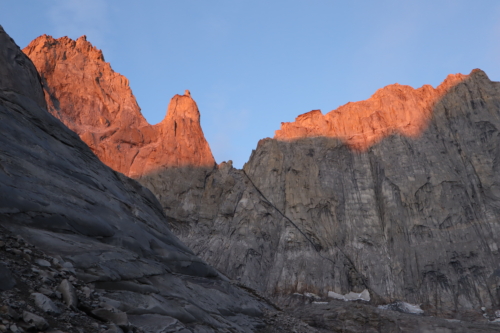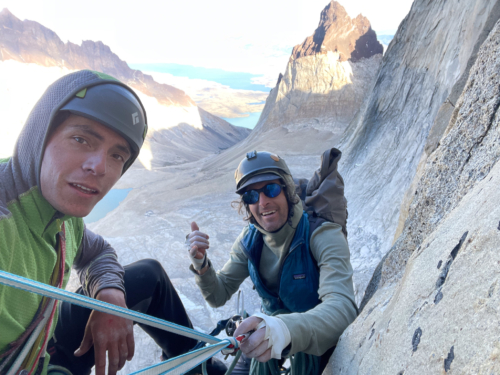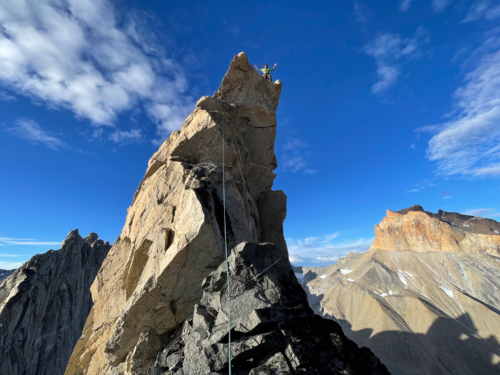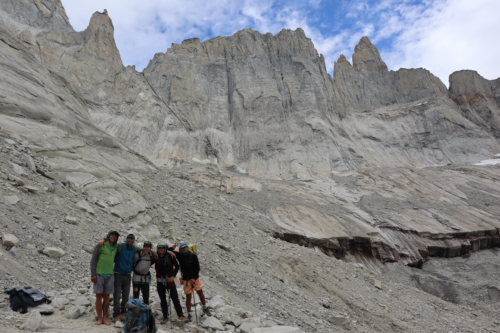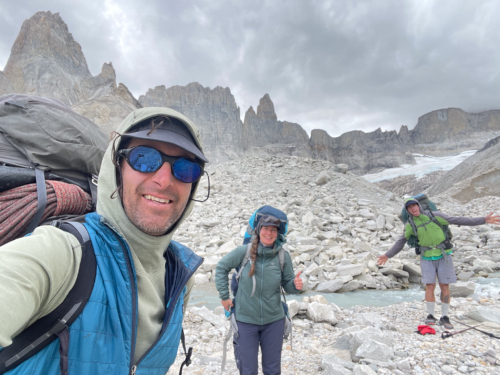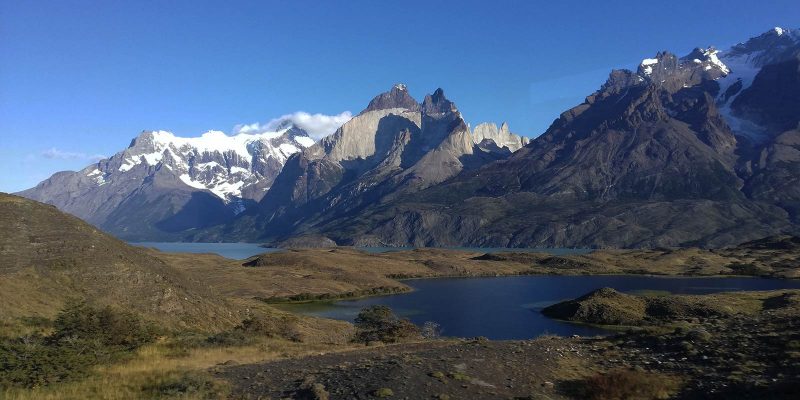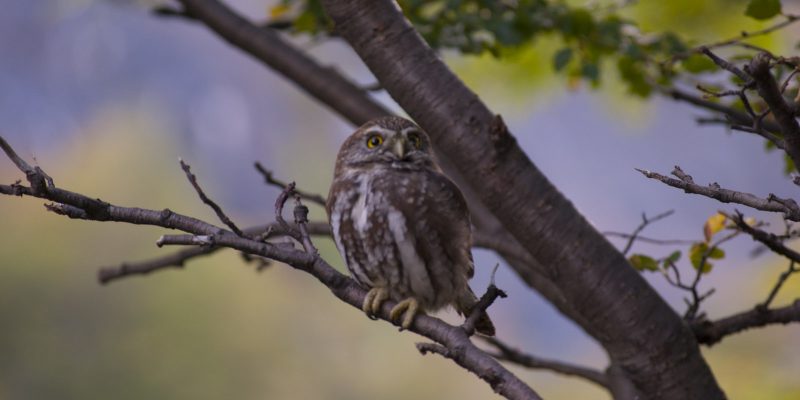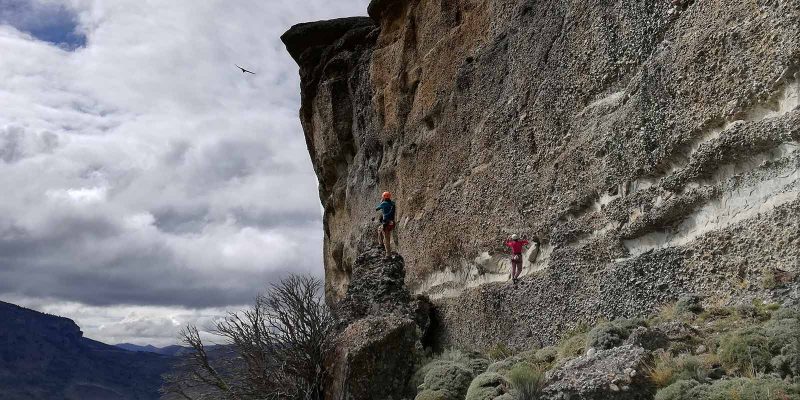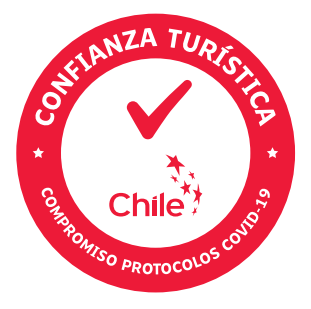Torres del Paine Feb 3-5 2024
3rd ascent of El Matédor, 4th ascent of the Aguja Desconocida
On February 3th 2024, Lisa Raunig, Franco Rojas and myself, left Puerto Natales to head up to Torres del Paine National Park. We got to the administration at about lunch time and were lucky enough to find a few CONAF staff members who had not gone out for lunch and got our expedition permits issued. At about 14:00 we were at the parking lot of Las Torres Hotel ready to hike in towards the Bader Valley.
The hike to Welch`s camp took about 5 hours. There were 3 other parties preparing dinner and getting ready for their respective objectives at different peaks.
The next day, February 4th, we hiked further into the valley. After leaving the forest, the approach was on compact moraine until reaching the lake. We continued along the west shore of the lake and up onto the steep hillside which consisted of loose rocks that occasionally crumbled down. After 5 hours of treacherous terrain we reached a flat area where we could pitch our tent, eat and rest before our climb the next day. But before going to sleep Franco and I scouted the approach to the base of the climb and located water sources.
On February
5th at 5:30 am, we got up to make breakfast just before sunrise. At
6:00 am we said bye to Lisa and told her to expect us back at around 21:00. We
told her not to worry if our ETA got prolonged up to 24 hours from our
departure time, since Franco and I knew that things could take longer than
expected.
At 7:30 we did rock, paper, scissors and Franco got to lead the first block of
3 pitches. Some sections of rock were wet but Franco did great at pushing the
rope up the initial slabs.
We were pretty quick at the belay transitions and had a good pace going up and swapping lead blocks.
The first crux was on our pitch 5 (pitch 4 for the Belgians) where we should have traversed left a bit earlier but Franco got sucked in a bit higher and ended up traversing almost horizontally to the left, where rope drag became an issue and slowed down or progress a little bit.
After a couple more pitches, it was my turn to take the lead just past the col between La Hoja and the Aguja Desconocida, which revealed amazing views into the French Valley with the Cathedral, Cota 2000, Los Gemelos, the Shark´s Fin, and the Southern Patagonian Ice Field in the distance.
At one point I wanted to climb on the east face of the needle but the rock quality was a bit suspicious so we decided to climb on the north aspect. A series of amazing finger cracks lead to a stance for a belay. There began the traverse, which I though was going to be along a series of stable ledges. Such ledges, however, seemed to be precariously in place and I did not dare to weight any of the blocks conforming the ledge system. It just seemed too unstable and I did not want to dislodge tons of rock below my feet, so I continued traversing gently until reaching a good stance for a belay below the crux pitch.
Franco did an excellent job aiding though that pitch which I tried to free climb as second. I ended up sitting on the rope, pumped to the core, just before the traverse to the right that leads the belay. It was an amazing pitch. The next pitch took us to the broad ledge before the summit block, where we took our time and enjoyed the views. The summit block was a bit exposed but not difficult. We both enjoyed a few minutes on the summit.
Before starting our descent, we replaced the cords that were equalizing the pitons and committed to the first 70 meter rappel. As I was reaching the ends of the ropes I realized there were no rappel anchors, even though we were expecting 2 sets of rappel anchors (1 every 70 meters and 1 every 60 meters, left by the 2 previous parties who climbed the route in 2018 and 2019) There was nothing, so I had to build one at the beginning of the crux pitch.
The next rappel took us to a funnel type wide chimney and no anchors where in place, so we placed a piton and a stopper. As we pulled the ropes one got stuck a little and as we pulled it harder it dislodged some grapefruit size rocks that flew close by.
At some pint we did find some rappel anchors but It was evident that some mayor rockfall had taken place and destroyed the pre existing anchors. Anyhow, we continued rappelling into the night. At one point we could not pull the rope because it was pinching itself against a corner and the edge so I had to ascend the 70 meters we had just rappelled in order to fix the problem. The solution worked but as the rope came down it got stuck again some 15 meters above us, which Franco solved by climbing up to the tangled bit.
We though we had reached the ground so we pulled the ropes, coiled them and searched for our backpacks. No luck. The slabs were still too steep and we ended up having to rappel once more. Finally, we were on the ground but the backpacks were nowhere to be found, so we decided to rest a bit. We found the packs eventually and put our approach shoes on. What a relief to get out of the climbing shoes after about 20 hours in them.
It is worth noting that the landscape changes drastically whenever there is no sunlight. With just our headlamps it was difficult to navigate back to the campsite, so we decided to rest and enjoy the forgiving conditions with full moon in this wild place. The cold, however, did not let us sleep much so we decided to continue down to camp taking advantage of the moonlight.
Finally, near sunrise, we ended up reaching camp, where Lisa received us with food and drink. We were exhausted but happy to have realized a dream.
After resting some hours, the other party with Sebastian Pelletti and Hernan Rodriguez was coming down from La Espada after completing the first ascent of ‘Arma de Doble Filo’. Around this time, Sean Villanueva O´Driscoll was already on the North Tower during his rope solo traverse of the ‘Doble M Traverse’ of the Torres del Paine.
The hike
down went well. We decided to hike on towards the east shore of the lake, which
was just as treacherous, consisting of refrigerator size blocks stacked onto
each other like a natural thousand years old Jenga. Every step required full
concentration and a bit of testing before fully committing to it.
We took a
little break at Welch´s camp before continuing down the valley. It was very
nice having the normally busy trails of the W trek to ourselves while enjoying
a moon rise on the south east.
We made it back to Natales at around 3:00 am completely exhausted.
See route topo by Siebe Vanhee here.
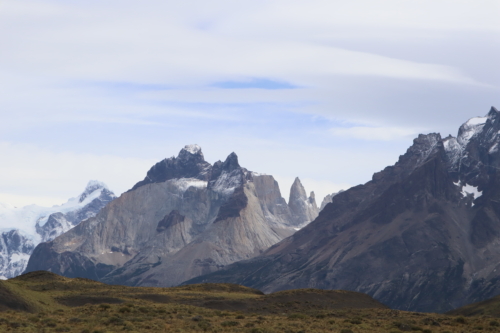
Los Cuernos (The horns) are located on the south/central part of the Paine massif. They are unique since there is older/softer dark rock on top and beneath.
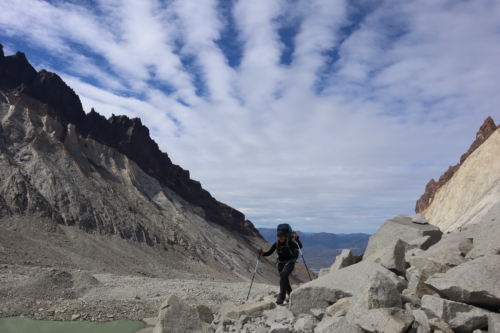
The approach was a challenge. What used to be aglacier in the 1990´s is now a 5 km morraine with wobbly blocks.
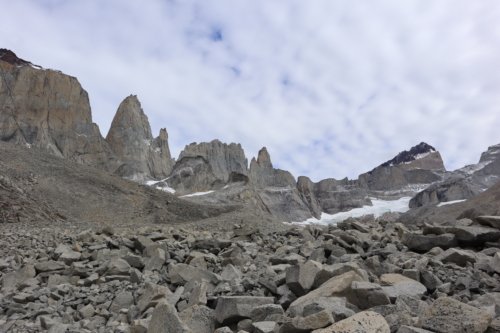
The glacier polished and remote granite peaks in Torres del Paine National park present great challenges and vertical adventures.
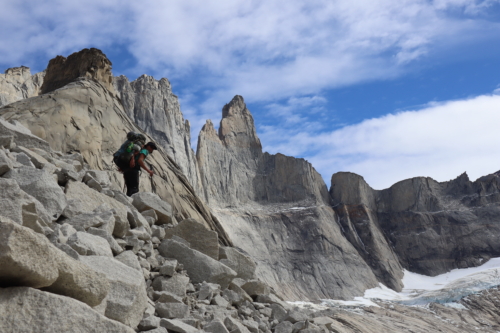
The approach required concentration, balance and caution due to the precariously stacked granite blocks of various sizes.
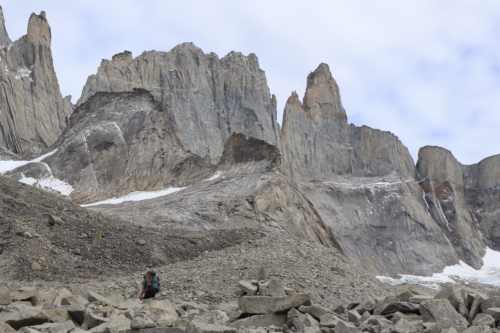
There used to be ice here in the 1990´s which allowed for faster a progression. Now with the “dead glacier” the approach takes longer.

We woke up at 5:00 am to have breakfast and hike the 45 minutes to the base of the route. We started climbing at around 7:00 am
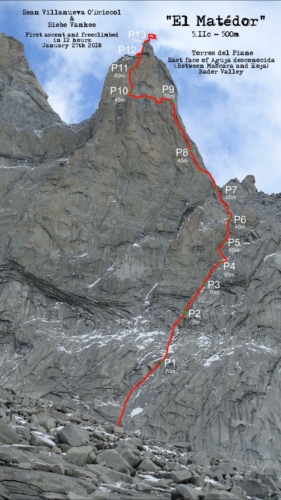
El Matédor is a route in de Aguja Desconocida in Torres del Paine National Park, Chile. It was first ascended and free climbed in 12 hours by the belgian professional climbers Sean Villanueva O’Driscol and Siebe Vanhee on January 25th 2018. It was the second ascent of the granite spire.
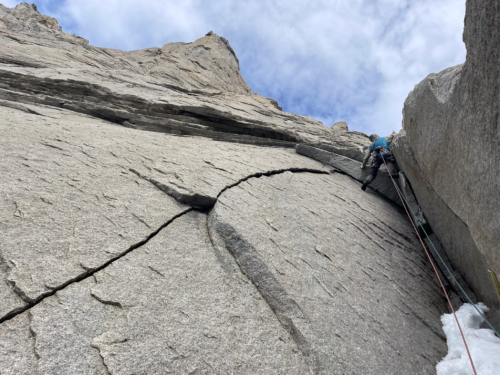
We climbed in blocks switching leads every 3 pitches. There was some snow in the shady corners but mostly dry with good conditions
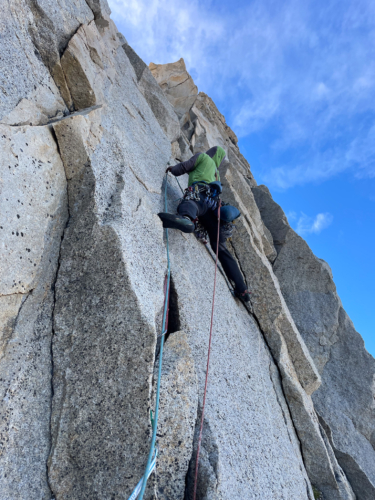
The rock was mostly of great quality with crack systems that protect well from the ground to the summit
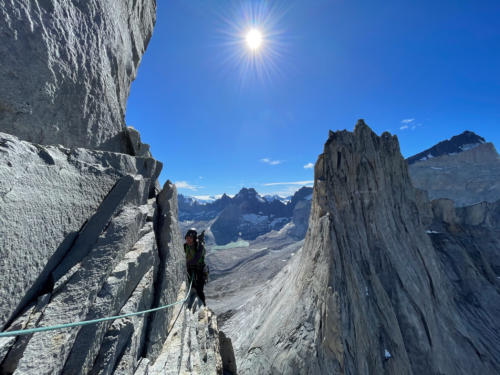
Franco about to reach the belay before the traverse pitch. The views of La Hoja and the spires deep in the French Valley were mesmerizing.
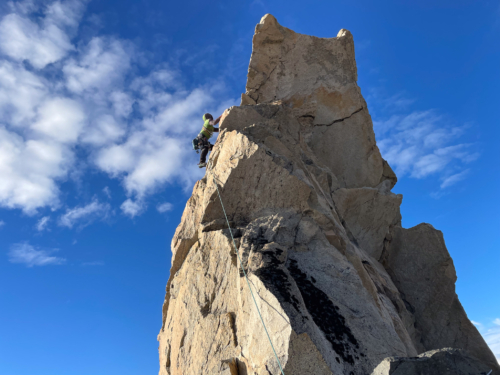
The last pitch is about 15 meters long with only one fixed stopper for protection but the rock is grippy and the moves felt not that difficult.
